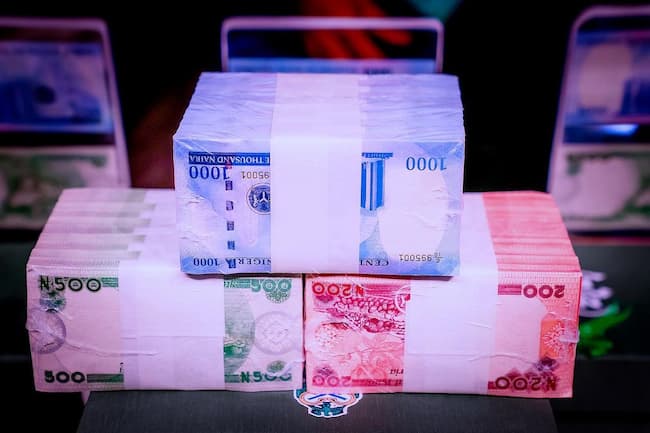The naira has experienced a significant drop in the foreign exchange market amid a lack of sustained FX intervention from Nigeria’s Central Bank. According to FMDQ data, the naira depreciated by 4.42%, closing at ₦1,670.65 per dollar in the official market.
Last Friday, the naira strengthened to ₦1,600 per dollar following three rounds of FX auctions, where authorized banks received a total of $148 million. However, the currency faced renewed pressure on Monday as the exchange rate worsened, with analysts suggesting the naira may be settling around ₦1,600 as a true market value.
This depreciation contrasts with projections anticipating a naira recovery. Goldman Sachs forecasts an exchange rate of ₦1,200 by year-end, while Fitch Ratings estimates ₦1,450 per dollar. In its latest analysis, FSDH predicted the naira might stabilize at around ₦1,560.
Experts attribute the naira’s decline to FX liquidity constraints, with high demand for dollars for international payments placing additional pressure on the currency. “Nigeria should leverage its strong external reserves to defend the naira,” an industry source told MarketForces Africa, “but the Central Bank’s current approach, including a willing buyer, willing seller model, could ultimately harm the currency.”
The Central Bank of Nigeria (CBN) has been making FX sales to authorized banks, but the persistent demand for dollars has offset any stabilizing effect on exchange rates. An investment banker noted, “The naira’s current level may reflect a valuation acceptable to monetary authorities, who continue to rely on intermittent FX auctions.”
Recent data shows Nigeria’s external reserves have risen to $39.365 billion, enough to cover over 15 months of imports. However, analysts point out that a significant portion of these reserves is tied up in government commitments, including FX swaps and derivatives.
In the parallel market, the naira remained stable at ₦1,730 per dollar due to light trading activity. Meanwhile, global oil futures suffered steep declines, with Brent crude trading around $71.83 and WTI at $67.68, following news that Iranian energy facilities were left undamaged in a recent Israeli strike. Gold’s rally paused as U.S. Treasury yields and the dollar gained strength.
Investors are now focusing on upcoming U.S. economic data to gauge the Federal Reserve’s interest rate outlook, with gold trading near $2,754.90 per ounce.














